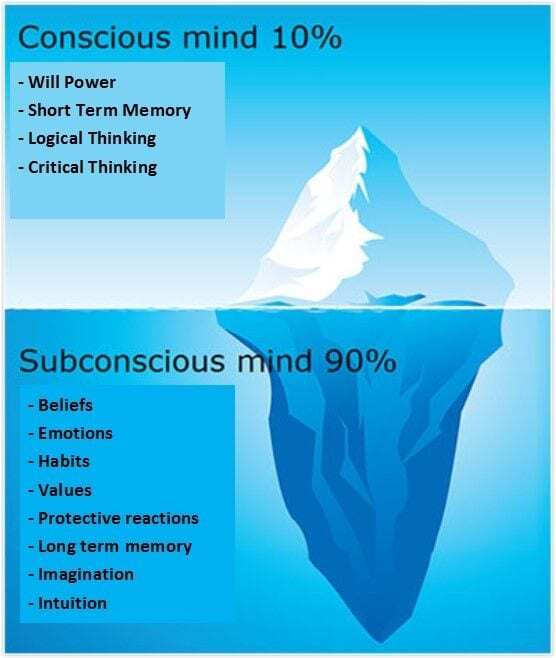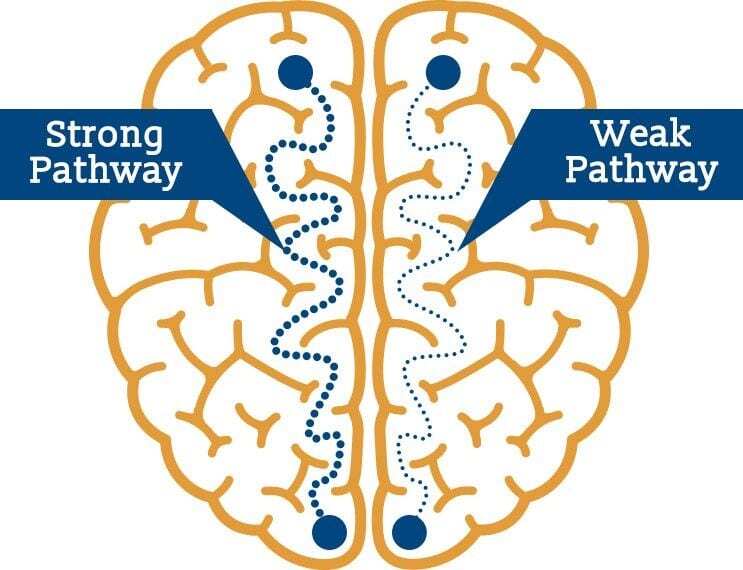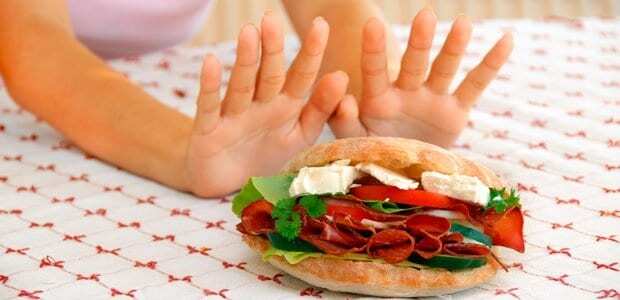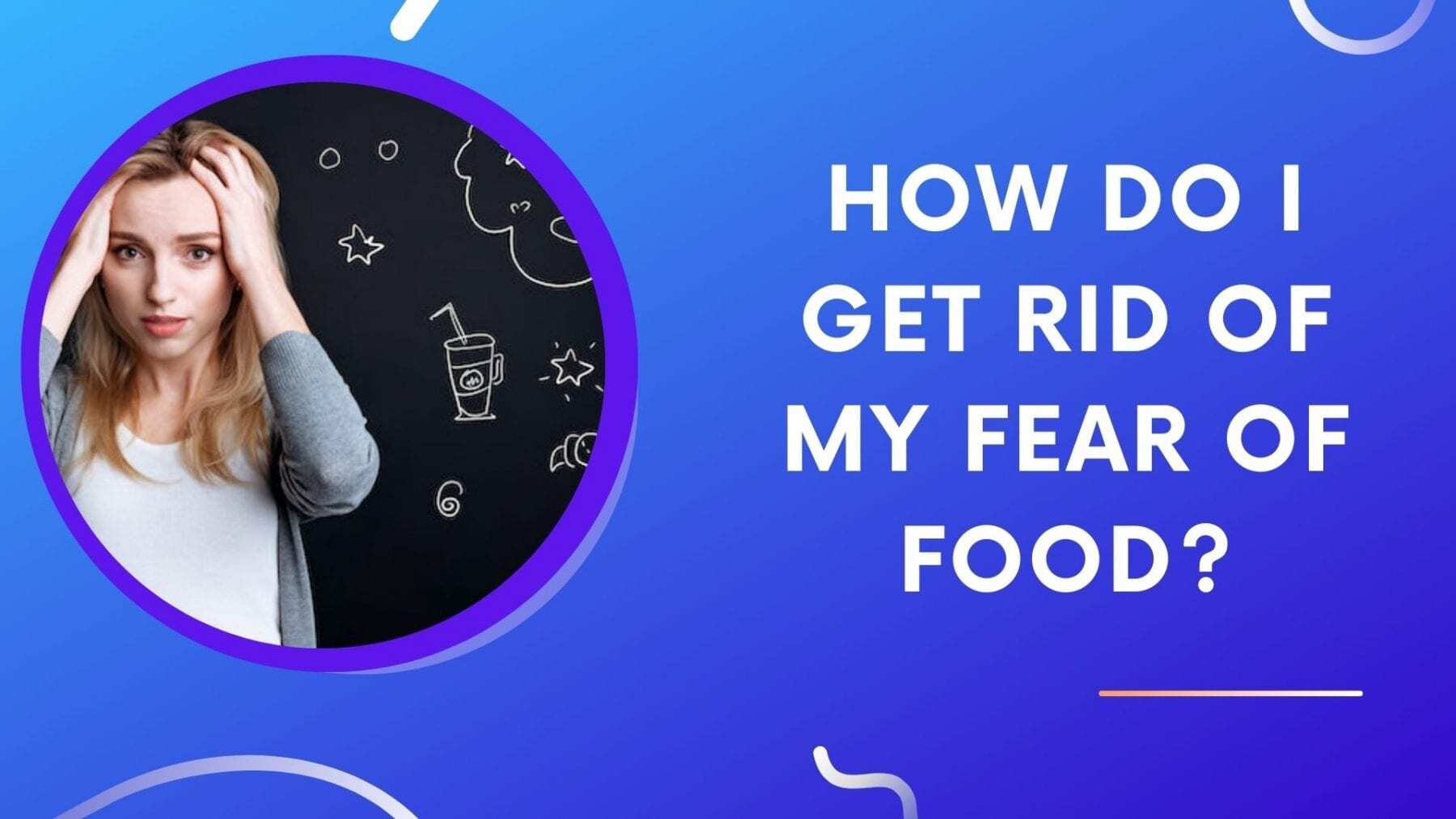Do you have a fear of food?
Here are some food-related fears people have expressed to me over the years:
- ‘I’m afraid that I will never be able to stop overeating’
- ‘Will I ever be able to stop thinking about food?’
- ‘Will I ever be able to heal?’
- Fear of cooking
- Fearful of trying new foods
- Fear of certain foods
Normally fear of food is a taboo topic. Who wants to publicly admit a deathly fear of birthday cake?
At Eating Enlightenment, though, we know that food fears, and eating disorders for that matter, are affecting the mental health of many people.
There’s no doubt that food fears are indeed challenging and come with negative mental health consequences. I know this myself for a fact.
However, you can also be assured there are practical steps you can take on your own to overcome your food phobias.
A practical DIY 4-step approach to get rid of your food fears.
This practical DIY approach takes the simple journaling of Cognitive Behavioral Therapy into 4 steps.
Warning: This approach will be tedious, but very worthwhile!
If food journaling triggers you of your old calorie journal, please watch this video here.
This is nothing like a calorie journal!
Please note: I am not covering the development of food phobias or the different types of food fears in much detail. This blog post is simply meant to be a 4-step DIY action guide to help you get rid of food fears.
However, at the bottom of this post I’ve briefly provided info on three most common forms of food fears and their medical definitions – Neophobia, Cibophobia and Brumotactillophobia.
With that being said let’s dive in!
DIY Step #1 – Become Clear About Your Food Fears
The first step is to know exactly what is behind your food fear.

Your food fears are like the visible tip of an iceberg, but there is a lot of subconscious baggage attached you can’t see.
Some estimates say that only 5% of an iceberg is visible!
The visible part of various fears around foods is simple. Something about food scares you and you know you are afraid. These fears could be anything!
For example, some people get trapped into only eating “healthy” perishable foods. Anything that comes in plastic is bad! Some people have the fear of cooking too!
Fear is a normal part of human experience.
The girl who was sitting beside me earlier was afraid of nutella and graham crackers. She was crying and trembling and definitely knew she was afraid.
Her fear is the visible part. But if you want to get rid of your food fears then you need to tackle the invisible part.
The invisible part of food fears are the subconscious reasons you are afraid to eat food.
Subconscious fears express themselves in various ways. For example, various people I’ve worked with over the years have described their food fears as:
- A cacophony of loud voices shouting
- A hurricane of confusing, conflicting emotions
- An angry back and forth, like an argument
Now admittedly with this specific girl in this story, I do not know what was going on through her head.
- Was she afraid of potentially gaining weight?
- Was she re-enacting a parental drama from years ago?
- Had she binged on these foods before and now was triggered in their presence?
- Did she think that she needed weight loss (even though her weight was already too low)
- Perhaps the voice of her old swim coach was berating her for eating carbs?
I do not know exactly what was going on through her head. Of course, I have no idea what’s going through your head either!
But here’s what I do know:
Understanding the invisible part of your food fears is the first step to getting rid of your food fears – that’s why we write them down.
Use A Journal To Understand Your Invisible Food Fears
To understand and ultimately get rid of your invisible food fears, you’ll need to put this DIY step into practice.
Write your thoughts out before you eat (after is fine too).
Why is writing your thoughts out before you eat so important?
Because thinking about your food fears is extraordinarily difficult. But writing can get these thoughts out of your head and onto paper!
To understand your food fears, you need your food fears to be concrete and defined.
Most people have vague and imprecise phobias and fears. Like when I watch a scary movie, I get scared so easily! I can barely watch scary movies because something about scary movies just scares me.
But what? What exactly about scary movies makes me afraid? Is it the music? The gore? The potential of a jump scare? My empathy for the characters?
There are a bunch of different reasons why scary movies scare me.
What would it look like if I wrote out my fears on paper? Here, let me write them out right now:
- I’m scared of something surprising and loud popping out
- I’m afraid something bad will happen to a character I care about
- The unknown terrifies me
See how I’ve gone from a vague fear of scary movies to three specific fears? That’s step 1.
Step 1 summary: Get your fears on paper so they are tangible!
DIY Step #2 – Ask ‘Why?’ To Identify The Root Of Your Food Phobias
You may find this next step is more tedious than the first step.
I know, I know …
Journaling your thoughts before you eat to identify your food fears is trouble enough! And that’s just step 1!
Before we talk about step 2, I’d like to briefly acknowledge the tedious nature of awareness journaling.
This whole journaling your food phobias out on paper is undoubtedly tedious!
But if you want to get over your food phobias, then following a proven path is best, even if this proven path is tedious.
Nobody said treatment and recovery was easy!
What I’m doing right here is sharing the essence of Cognitive Behavioral Therapy (CBT). CBT is tough and tedious. But CBT really does work!
Just check out this video to see how many authority health resources list CBT as a first line treatment option for eating disorders.
Did you see in the video how many health places list CBT as their best treatment option for eating disorders?
Bottom line: If you really want treatment, you’ll be willing to do this tedious journaling for a few months. Don’t worry, you’ll get over your food fears and won’t need to journal after you overcome them.
Training Video On How To Ask ‘Why?’
This video below walks you through the process of asking ‘why?’ multiple times.
Let me give two examples of how this works. The first example will be explicit about food phobias. The second example will be for a food-related fear.
Example #1
- I am afraid of nutella. Why am I afraid of nutella?
- I am afraid of nutella because … I am afraid of eating too many calories. Why am I afraid of eating too many calories?
- If I eat too many calories then I will have let myself down. Why am I afraid of letting myself down?
- If I let myself down then I’ll have to admit I’m an utter failure. Why am I afraid of admitting I’m an utter failure?
- If I admit I’m an utter failure then I’ll give up on life. Why am I afraid of giving up on life?
- I’m afraid of giving up on life because there is some part of me that wants to stay alive
See how asking ‘why?’ multiple times leads to powerful insights?
Let’s go with Example #2:
- I am afraid of getting treatment for my eating disorder. Why am I afraid of getting treatment?
- I’m not even sure I have an eating disorder. How does this relate to me being afraid? (Notice I used ‘how’ instead of ‘why.’ That’s ok because ‘how’ in this case fits the overall theme of exploring your fears in more depth.)
- If I have an eating disorder then I’ll have to face some uncomfortable truths. Why am I scared about facing uncomfortable truths?
- If I face uncomfortable truths, I may have to do something about them. Why am I scared about doing something about uncomfortable truths?
- I have tried in the past to change my eating habits, but I have failed and I am scared of failing again. Why am I scared of failing again?
- I am scared of failing again because it really hurts and I don’t want to experience that pain again. Why am I afraid of pain?
- Because pain hurts.
Please remember that you’ll most likely have many food fears. You’ll need to repeat this process for each food fear. Sometimes people repeat this exercise 3-4x for a single food fear.
I know repeatedly questioning your food fears is tedious, but you can do it.
Just keep in mind that treatment is not forever, but you can fully and permanently recover.
DIY Step #3 – See Differently: Compare Initial Food Fears To Your ‘Why?’ Answers
As strange as this may sound you are halfway there.
Here’s a recap of what you’ve done so far:
- Made Your Food Fears Tangible – You’ve written your food fears out on paper.
- Asked ‘Why?’ 5x – You wrote your food fears in step 1. Now you are digging into your food fears.
In step 3 you contrast your initial food fear to your ‘why?’ answers.
Let’s refer back to Example #1 and Example #2:
- Example #1 Before ‘Why?’: I am afraid of nutella.
- Example #2 Before ‘Why?’: I am afraid of getting treatment for my eating problems
Then you ask ‘why?’ 5x:
- Example #1 After ‘Why?’: I’m afraid of giving up on life because there is some part of me that wants to stay alive
- Example #2 After ‘Why?’: I am afraid of pain
**Critical Concept To Understand: Habituation and Neuroplasticity**

There is tremendous power in these first three steps:
- Simply writing out your food fears
- Exploring food fears with ‘why?’
- Comparing your initial description of the fears with the real reasons behind them
By doing these three steps you have tapped into two powerful biological forces:
- Habituation
- Neuroplasticity
Habituation Definition: the diminishing of a physiological or emotional response to a frequently repeated stimulus
Example: When I was a child I was afraid of water. My parents took me to swimming lessons. First I felt fear just dipping my toe into water!
However, nothing bad happened after dipping my toe in the water. I felt less fear the next time I went to the pool.
Neuroplasticity Definition: the ability of the brain to form and reorganize synaptic connections, especially in response to learning or experience or following injury.
Example: My brain ‘reorganized’ my initial fear of water. Then the second time I went to the pool I felt less fear.
Key Concept: The same process applies to food fears. By writing down your food fears you naturally habituate towards your food fears.
As you ask ‘why?’ you then ‘reorganize’ your food fears. You change your brain as you question your initial perception of your food fear.
DIY Step #4 – Respond After Writing, Pausing, Processing (aka, Take Action Even If Still Afraid)

This final step is where you choose to take action despite your phobias around food.
Please note action has many different meanings.
Here are some ideas of action:
- Eat the food you fear
- Nibble on the food you fear
- Just sit with the food you fear
- Go on a walk
- Listen to music
- Eat something else
- Journal more
- Take a shower
- Touch the food but don’t eat it
- Go watch TV
The more you face your food fears, the easier it will become to eat the foods you fear.
Please remember the opposite is true as well: the more you decide to ‘give in’ to your food fears, then your brain won’t learn.
Please, please don’t think you must or need to eat the food you fear. Simply bringing yourself closer to eating your fearful food is success.
For example, just hold the food you are afraid of eating without actually eating. This counts as a win!
In due time you’ll be able to eat this food 🙂
Summary: The more you decide to feel and to write about your food fears the less power they will have over you.
This is how you get rid of a food fear!
- You journal
- Explore your beliefs around the food
- You face your deep down fears
- You make a different decision
*Please note: These four DIY steps are meant for the person who has a safe, solid nutrition structure. There are also advanced Intuitive Eating techniques like Unconditional Eating that can help with food fears too.*
**A safe, solid nutrition structure means you are not dieting and are eating 3-5x per day. When you eat, your stomach feels content and full afterwards.**
Finally, I know some of you are curious about various types of food fears. I’ll finish this article with a list of food fears, definitions and resources for further reading.
Other Eating Disorders: Neophobia, Cibophobia and Brumotactillophobia

Neophobia: According to New Bridge, “Food neophobia is a term which has gained currency recently as a tool for understanding difficulty with feeding and eating. It refers to an overwhelming fear of new or unfamiliar foods; ‘neophobia’ refers specifically to fear of new.” Read more about Food Neophobia here.
Cibophobia: According to Healthline, “Cibophobia is defined as the fear of food. People with cibophobia often avoid food and drinks because they’re afraid of the food itself. Cibophobia may be specific to one type of food, such as perishable foods, or it may include many foods. … For example, people with Cibophobia may be fearful eating food will lead to weight gain.”
Brumotactillophobia: This is a technical term for fear of different foods touching each other.






